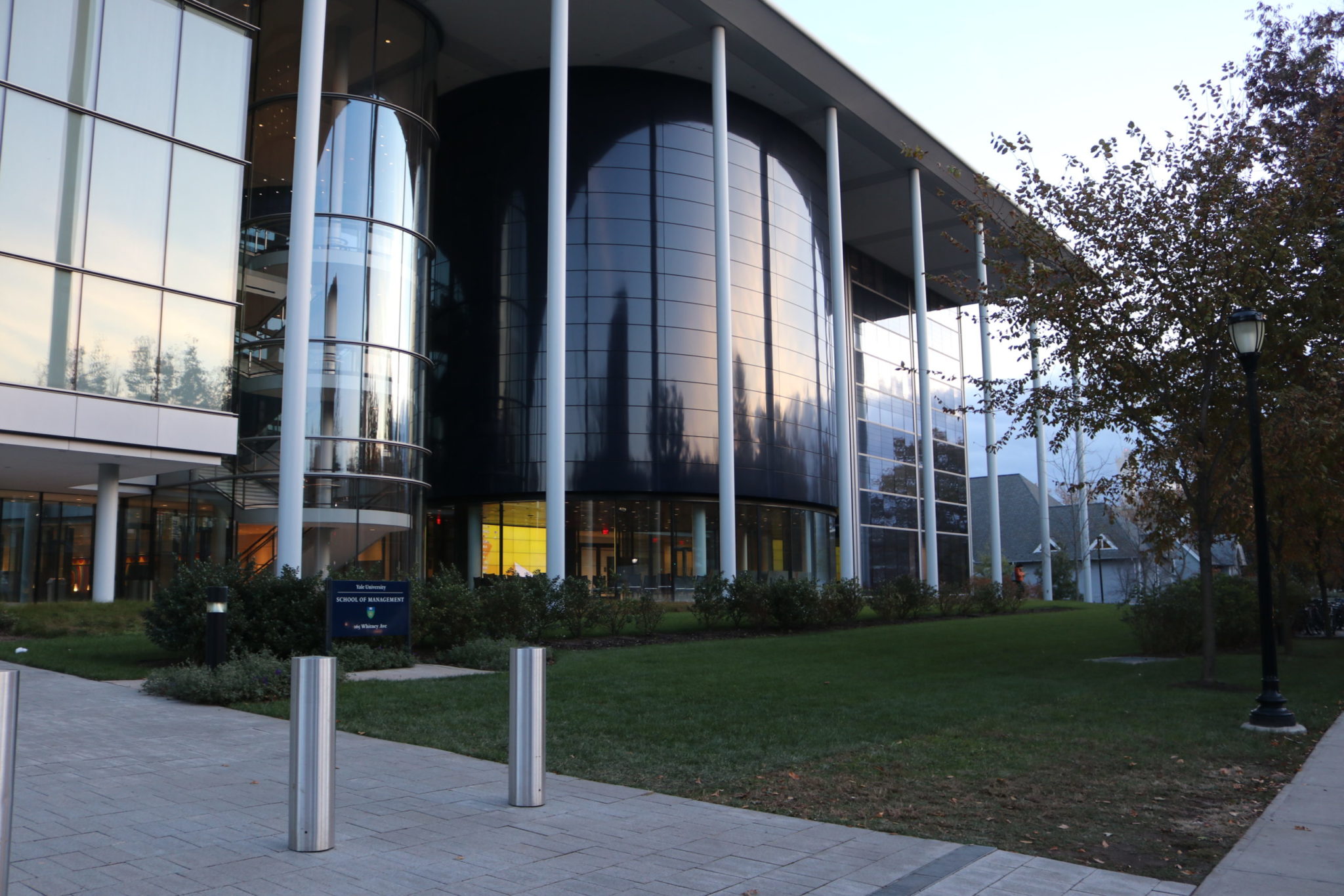
Kai Lip
On Aug. 31, the Yale School of Management welcomed its students back on campus for a year of hybrid learning.
This decision was made in conjunction with faculty, staff and students to ensure that all voices were heard.
“After a very careful analysis and diligent preparation, we came to a conclusion that the rewards outweigh the risks in terms of providing our students with a so-much-needed physical touchpoint to campus, faculty and each other,” said Gabriel Rossi, assistant dean for faculty and curriculum.
Regulations were put in place to ensure the public health safety of students and faculty. Among the safety measures are daily online health checks, free weekly coronavirus tests for students, face-covering requirements, social distancing procedures in all public spaces, enhanced cleaning of classrooms, hand sanitizer stations and increased break time in between classes.
Despite the new regulations, students agree that the administration is doing their best to make this year as enjoyable as possible in the given conditions.
“It’s a very different experience from what it was like last year, obviously,” Mary Najarian SOM ’21 said. “I think SOM makes sure to account for everyone’s safety, as well as capitalize on the benefits of in-person classes.”
According to professor of economics and finance Judy Chevalier ’89, the classroom feels “safe to the extent that I can tell.” She thinks that the SOM staff has done a great job in ensuring in-person classes are both safe and enjoyable.
In addition to the previously mentioned precautions, the SOM has split its student body into two sections: A-group will attend classes in-person on Mondays and Tuesdays and B-group on Wednesdays and Thursdays. This ensures that classrooms never get overcrowded with the majority of the class remaining on Zoom.
Sam Jiang SOM ’21 noted that only around a third of his classmates attend classes in person on a given day.
“If it’s an 8:30 a.m. class and it’s raining, cold and miserable, then, you know, there will only be a few people in,” Jiang said.
Students are also allowed to take the courses remotely, though most choose to take advantage of the in-person option.
According to Najarian, one possible reason for this is the networking opportunities that in-person classes provide.
“An integral part of the MBA experience is the networking and relationship building both in and outside the classroom, and Zoom with all its convenience simply cannot replicate that, so it was an integral factor in my decision to come back,” Najarian said.
For other students, the option of in-person classes helps make their classes more engaging.
According to Jiang, switching up his academic environment has benefited his learning. In addition, Jiang is also able to engage socially with his classmates through “casual hallway conversations with friends in between classes.”
Likewise, professors at the SOM share this overall positive viewpoint on the gradual return to in-person classes. Professor of economics at the SOM Fiona Scott Morton ’89 said that a number of students have told her that they really appreciated and enjoyed the opportunity to take her class in person.
“In terms of my teaching, I’m doing exactly the same thing that I’d normally do,” Scott Morton said. “So, I don’t think it’s a very different experience for the students in the classroom. I guess, that’s what they like in particular.”
Even with all the procedural changes, the faculty strive to preserve the class routine as “normal” as possible.
“I do enjoy teaching in person, and I think that even for the students on Zoom, it’s nice to see me in a classroom setting as opposed to my living room,” Chevalier said.
One point of students’ concern, however, is the administration’s disregard for adequate compensation for their reduced experience. Students cite the lack of various in-person events on campus as one way their experience has been lessened.
“Many people are upset that the school has not actually provided us with a decent refund option,” Jiang said. “They just promised not to raise tuition.”
Right now, the SOM is in the process of assessing current in-person experiences and considering potential areas of improvement.
“We’re all learning and trying to juggle lots of different things that are pulling our attention all over the place,” Rossi said. “We are eager to take feedback and make any adjustments necessary for the benefit of our students and faculty.”
The total enrollment at the SOM for the class of 2021 is 345 students, according to the class profile.
Tania Tsunik | tania.tsunik@yale.edu







